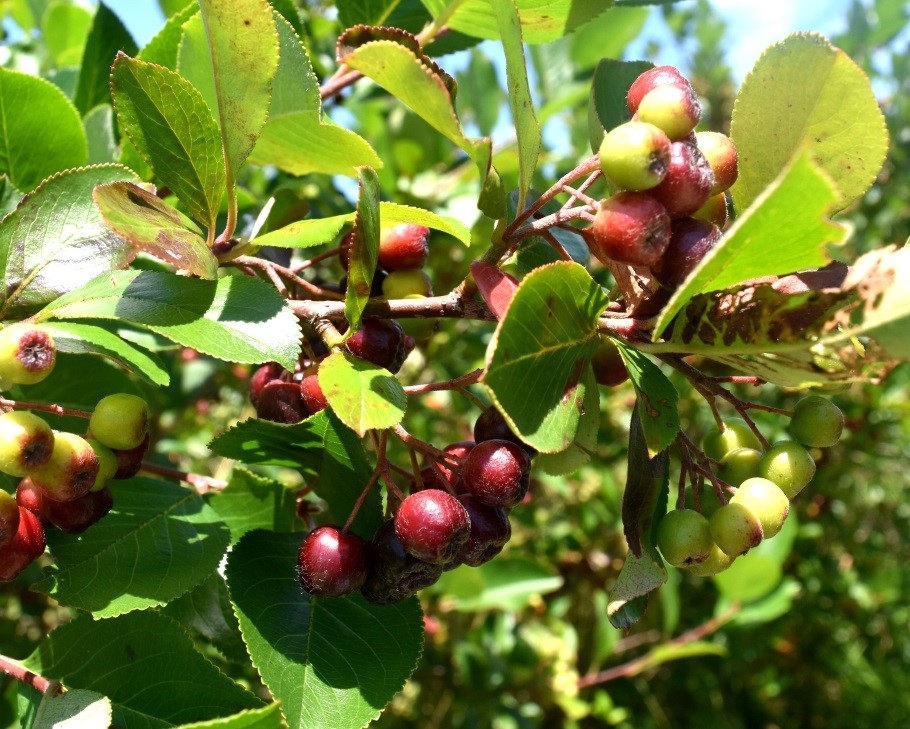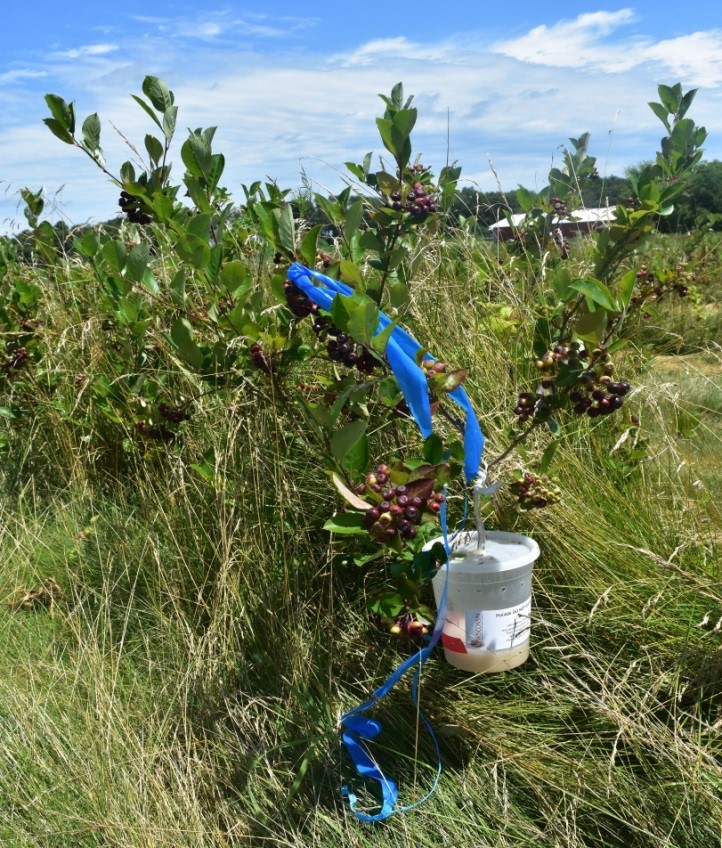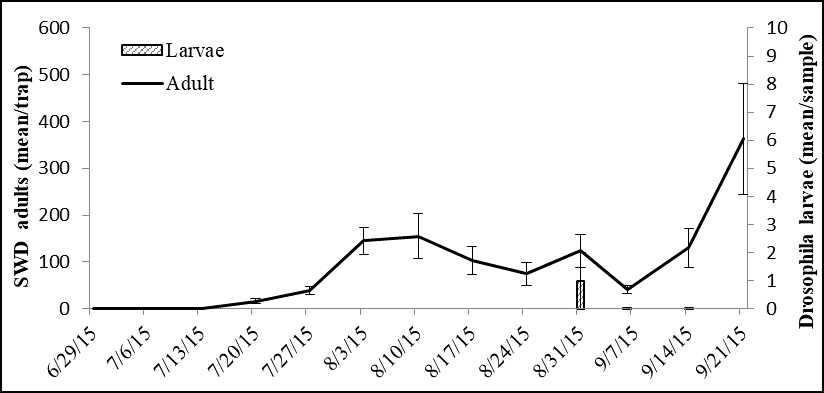Is Aronia Susceptible To Spotted Wing Drosophila?
Spotted wing drosophila (SWD) is a major invasive pest of soft skinned fruit worldwide. This pest has been reported to infest several cultivated fruit crops including blackberry, raspberry, blueberry, cherry, peach, grape, and strawberry and many native and non-native wild hosts including buckthorn, currant, elderberry, honeysuckle, mulberry, bittersweet nightshade, and autumn olive. Since SWD is a generalist of soft skinned fruits there is a need to identify all susceptible fruit species. The susceptibility of aronia (Aronia melanocarpa), a growing specialty crop, is unclear. Aronia is a woody shrub native to the U.S. that produces dark purple fruits (Figure 1). Aronia is expanding as a new specialty crop in the Midwest due to its potential as a high value crop, low pest pressure, cold hardiness and low cultivation requirements. It is currently marketed in specialty health food products and the health benefits are associated with prevention of hypertension and type 2 diabetes.

Currently, little information is available on the susceptibility of aronia crops to SWD. Identifying all hosts that meet SWD requirements will provide information to better understand population dynamics (e.g. at risk crops, early/late season activity, population peaks) and improve management. In 2014 and 2015 we conducted a research study aimed at determining the susceptibility of aronia berries to SWD in the laboratory, to monitor adult SWD field populations using yeast-sugar traps (Figure 2), and to assess field larval infestation.
No-choice tests conducted in the lab suggest that SWD can utilize aronia as a host if the berry is damaged or destemmed but not if the berry is intact. In these tests, more SWD larvae were present and more adults emerged per fruit in raspberry than aronia. Aronia is a firm fruit which may provide a physical deterrent to SWD, making oviposition unlikely in healthy intact fruit. In several other crop hosts, lower SWD oviposition rates were observed on more firm fruits. However if fruit is damaged, physical characteristics such as firmness might not affect oviposition. Fruit damage from other pests and cracked berry skin are often present in the field which may in turn increase SWD infestations.
Our data suggests that aronia is a lesser quality host than raspberry. SWD completed its life cycle (from egg to adult) faster on raspberry, averaging around 13 days, than in aronia, which averaged around 18 days. No larvae were found in undamaged aronia, compared to almost 50 larvae per fruit in raspberry. Furthermore, SWD adults emerging from raspberry were larger than SWD adults that emerged from previously damaged aronia. The slower development of adults and the emergence of smaller adults suggest that aronia is a suboptimal host to SWD.

During our adult field trapping, the first detection in aronia occurred the first week of July with a total of six flies. SWD was present at all three farms from July 6th through September 21st, 2015. Peak trap catch was the last week of trapping on September 21st (Figure 3) after aronia was machine harvested. The high trap catch numbers post-harvest are possibly due to the presence of damaged aronia which would increase access for oviposition. High trap catch, post-harvest, could also be due to the presence of ripening hosts nearby. Surrounding crops can influence trap catch as SWD is a mobile insect that utilizes different hosts based on availability. Alternative host use was further supported when we randomly collected aronia fruit to assess larval infestations over three separate weeks. A total of three drosophila larvae were collected. The drosophila larvae were detected from fruit collected on August 31st (Figure 3). The small numbers of spotted wing drosophila larvae found suggests that aronia serves as a low-risk susceptible crop and that the number of adults caught in traps is not a predictor of larval infestations.
Collectively our data suggests that intact unwounded aronia berries are unsuitable hosts for SWD; however, SWD can complete its life cycle within aronia berries. This successful use of aronia potentially provides a source for late season build up or serves as an in-between host until more preferable hosts are available, increasing their risk of infestation.


